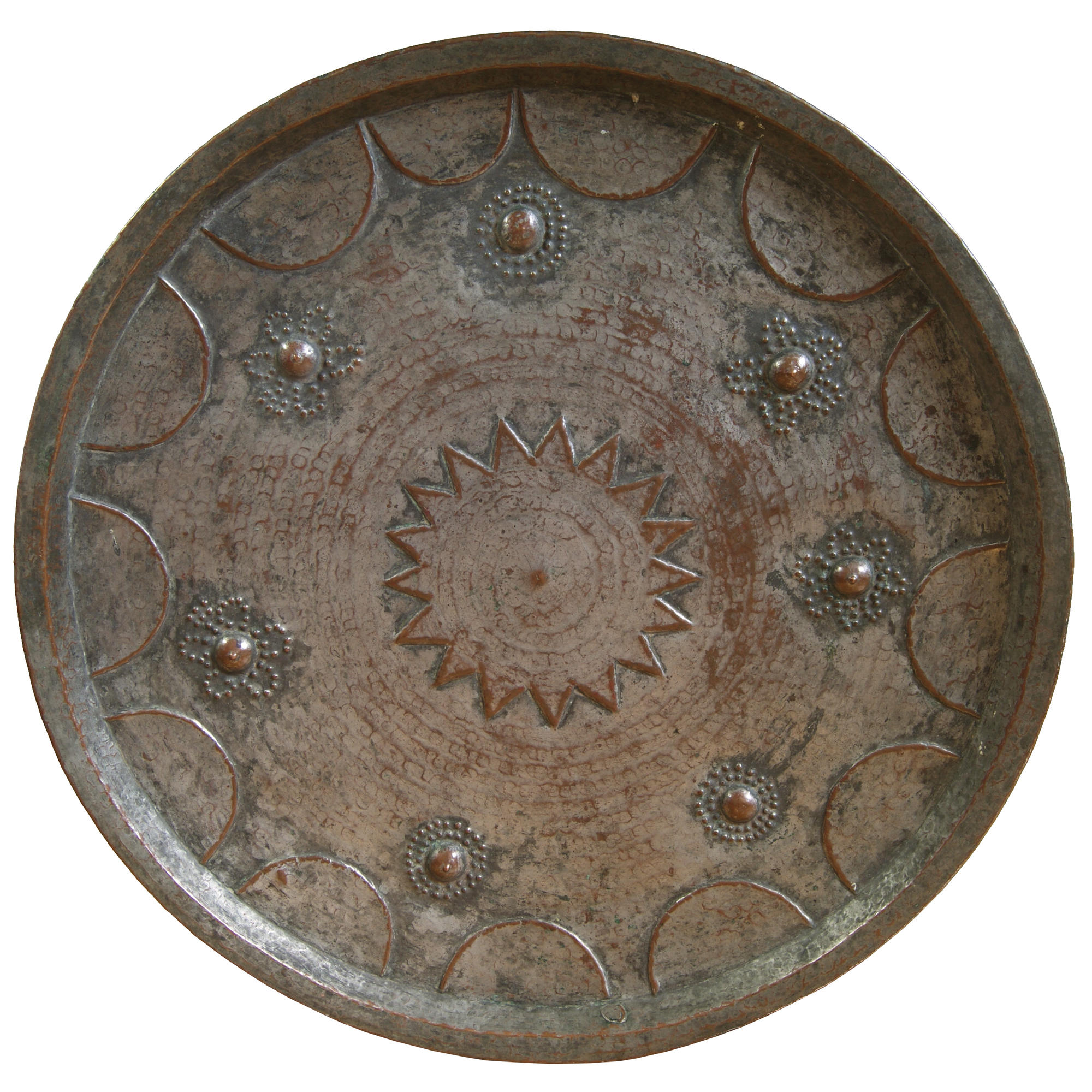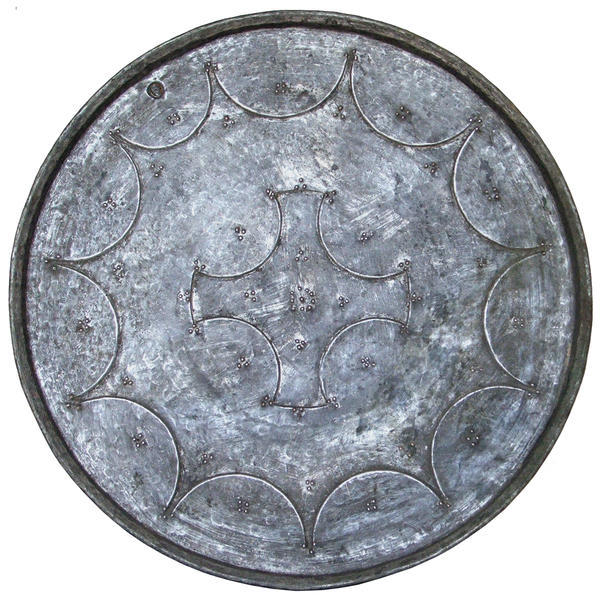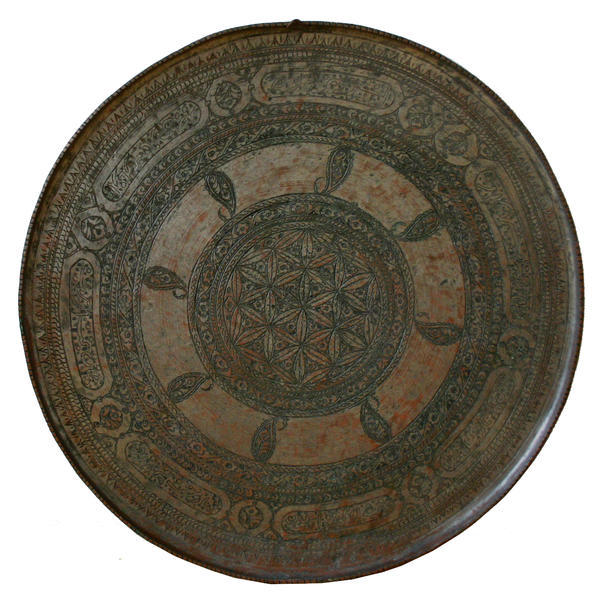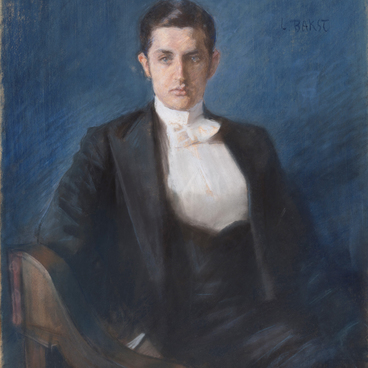Round trays with a large ornament were very popular in Dagestan and used in almost every household. Trays could be hammered or chased. In the former case, artisans hammered relief patterns on a metal plate using an embossing punch. In the latter, the pattern was chased on the metal surface with cutting punches, the tools resembling large nails. The chased ornament had a low relief but, as a rule, more intricate ornamental motifs.
Copper utensils have always been very popular: copperware was more durable, solid and lighter than ceramics or wood. Copper was used in cast pots, ornamental wall-mounted platters, water ewers and in many other household items. To protect them from corrosion or oxidation, their surface was tin-plated and then chased or embossed.
The Avar people were renowned masters of copper repoussé work in the 19th century. This craft was particularly advanced in the villages of Gotsatl and Ichichali.
Copper utensils have always been very popular: copperware was more durable, solid and lighter than ceramics or wood. Copper was used in cast pots, ornamental wall-mounted platters, water ewers and in many other household items. To protect them from corrosion or oxidation, their surface was tin-plated and then chased or embossed.
The Avar people were renowned masters of copper repoussé work in the 19th century. This craft was particularly advanced in the villages of Gotsatl and Ichichali.





